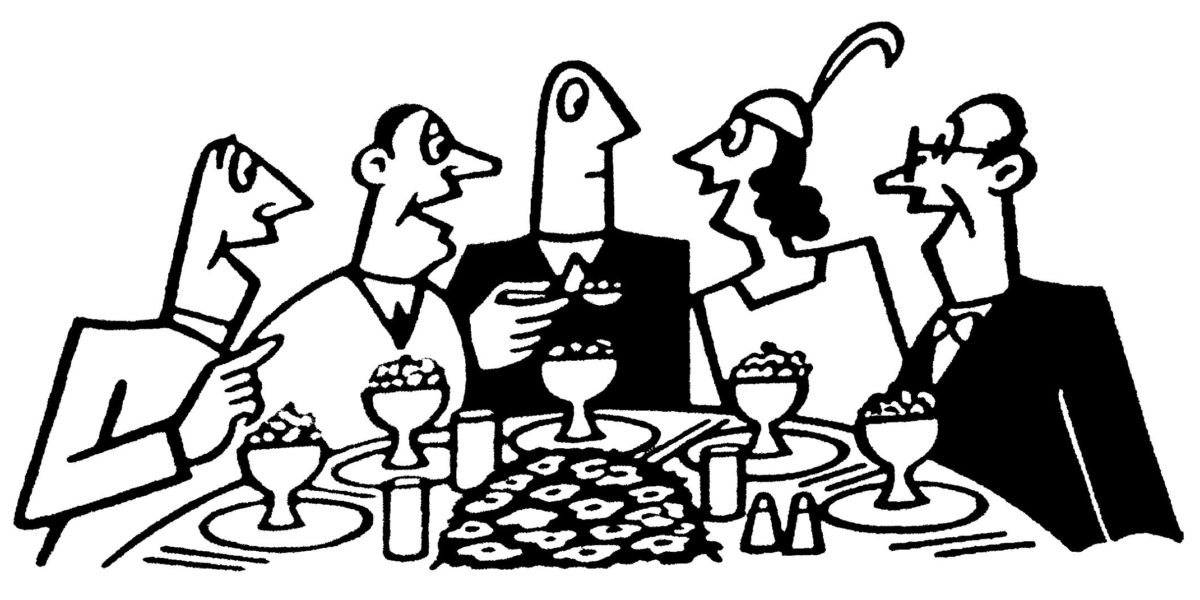By: Tad Friend Originally Published November 21, 2016 Issue
The table was set for an old-fashioned Irish dinner party: white linen, cut-glass vases containing celery stalks and air-dried raisins. The meal, in a small tasting room in the West Village, was a rehearsal for an immersive re-creation of the holiday feast in James Joyce’s story “The Dead.” Beginning later this month, forty-two audience members a night will eat and drink along with the twelve cast members of The Dead, 1904 as they take over the American Irish Historical Society, a nineteenth-century mansion overlooking Central Park, to stage one of the most famous parties in literature.
“The audience will be part of the play, but not in an intrusive, modern-theatre kind of way,” said Jean Hanff Korelitz, a novelist, who adapted the story with her husband, the poet Paul Muldoon. She acknowledged that their exhumation faced challenges, beginning with corpse confusion: “A shocking number of people I mention the project to think I’m talking about the Grateful Dead or ‘The Walking Dead.’ ”
Mark Russell, the executive chef at Great Performances caterers, emerged from his kitchen to explain that, for improved “approachability,” Joyce’s “fat brown goose” would now be a fat brown turkey. Korelitz and Muldoon approved, declaring goose to be, respectively, greasy and dry. Joyce’s “round of spiced beef,” Russell went on, had become a tenderloin marinated in a fig glaze, then rolled in cocoa. Muldoon, who moonlights as the poetry editor of this magazine, took a cautious bite. “Did you have spiced beef as a child?” he asked Ciarán O’Reilly, a fellow-Irishman, who co-founded the Irish Repertory Theatre and will direct the play.
“No.”
“Me, neither,” Muldoon said. “At that point, we were part of the modern world, with fish sticks and frozen peas.”
“What about corned beef and cabbage?” Korelitz asked.
“That’s nothing to do with Ireland,” O’Reilly said, recoiling.
“We had a dish like Spam,” Muldoon recalled. “But with even more fat.”
They assessed the duck-fat-roasted fingerlings, which weren’t quite the “hot floury potatoes wrapped in a white napkin” that Joyce describes. “The floury spud in Ireland is thought to be the height of sophistication,” Muldoon said. “They’re very dry and boiled, but fluffy.”
“The floury is a mashed potato,” O’Reilly said.
“I wouldn’t worry too much about being literal, honestly,” Korelitz said. Everyone frowned.
O’Reilly assigned parts, and they began to read from the play, a passage in which the guests chatter about opera as the main character, Gabriel Conroy, carves the turkey, né goose, prior to giving a speech in praise of their hosts—his elderly aunts—and of the old Irish ways. Just as Muldoon, in character, was reminiscing in a piping voice about a Galway man now “dead of drink,” a mechanical whoop split the air, and a voice announced, “This is the fire-safety-emergency-plan director.” Tedious instructions followed.
Yanked back into the present, the writers said that they regretted having to shift Joyce’s climax. In the story, Gabriel and his wife, Gretta, take a carriage through the snow to a hotel. There, she quells his rising lust by telling him she’s been thinking about a boy named Michael Furey, who died long ago of love for her. In The Dead, 1904, this conversation takes place at the aunts’ house, where the couple are snowed in. “One reason Gabriel was so excited was because he was going to a hotel with her, away from the kids,” Muldoon said. “The Wellington Monument they ride past is by any reckoning a phallic symbol.” He nudged his wife.
“You’re on your own with that one,” Korelitz said.
O’Reilly sampled the petits fours and wondered whether the quinoa and Tabasco-flavored ones might not be anachronistic. Then he raised a more serious difficulty: how to present the story’s famous last line, when Gabriel imagines the snow falling on the graveyard where Michael Furey lies, and falling all across Ireland, “falling through the universe and falling, like the descent of their end, upon all the living and the dead.” The director asked, “Should it be a voice-over?”
Muldoon demurred, saying that the narrative voice at that point wasn’t purely Conroy’s, and that Joyce was summoning a blizzard of historical antecedents, including the Bret Harte novel “Gabriel Conroy,” whose action begins in 1848, with the words “Snow. Everywhere.” Impishly, he added that the feast in the story should be seen as an ironical counterpoint to the Irish potato famine, which was rampant in 1848—“and even to the Donner Party, which is also the same period.”
O’Reilly pushed his plate away. “God, you’re a dark soul,” he said. ♦
